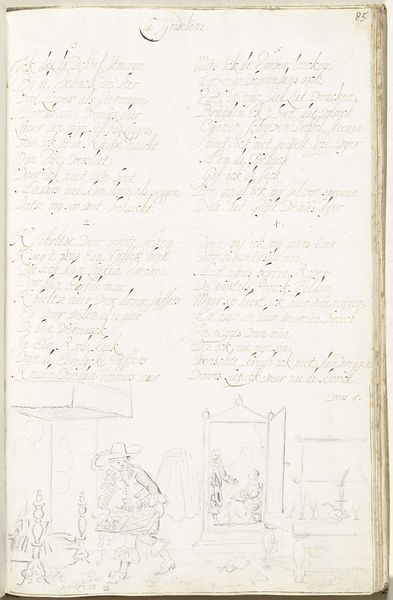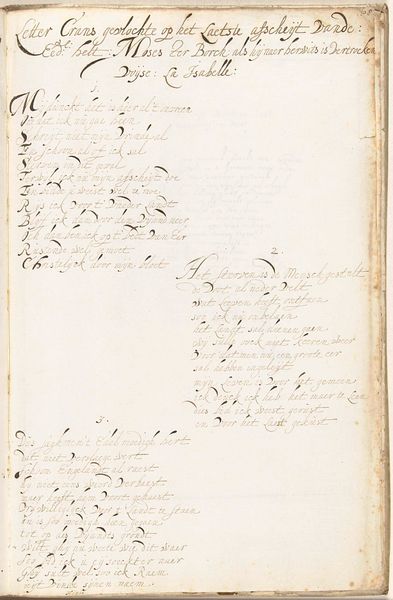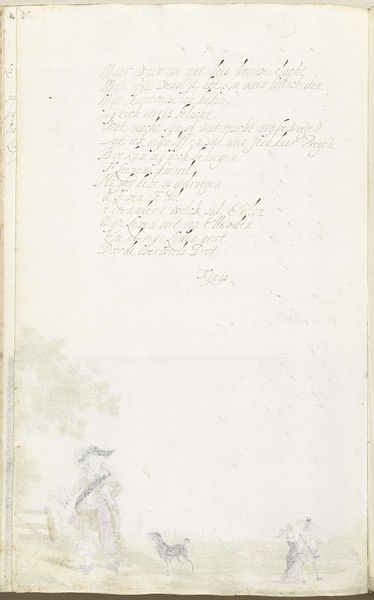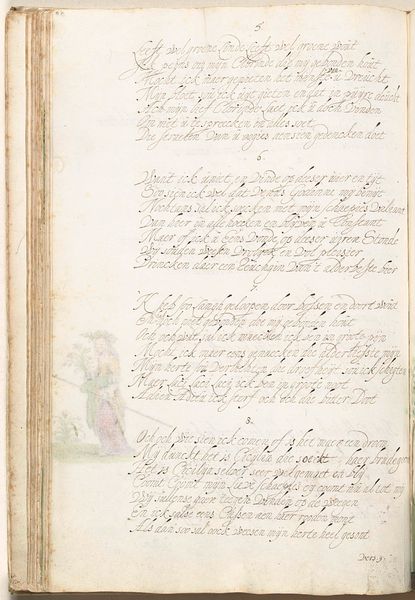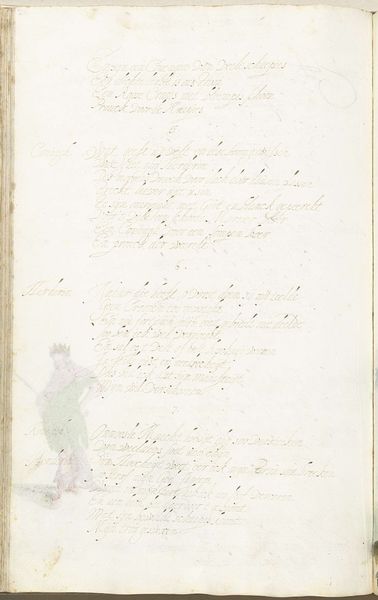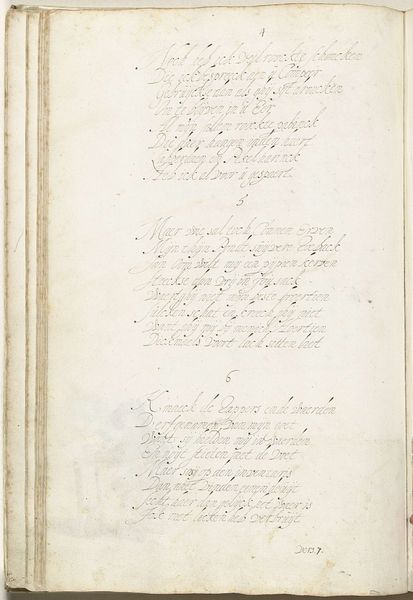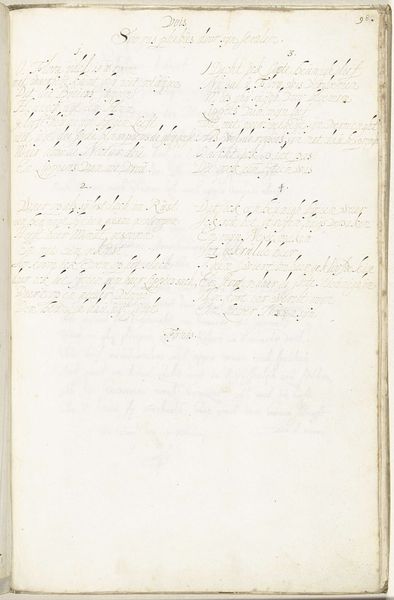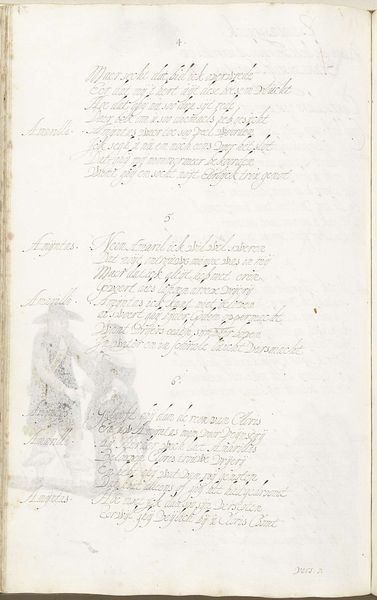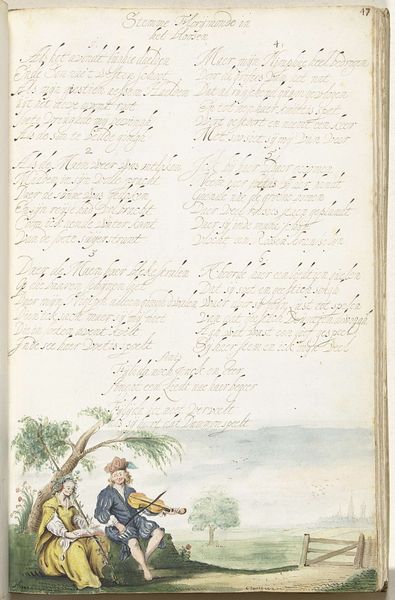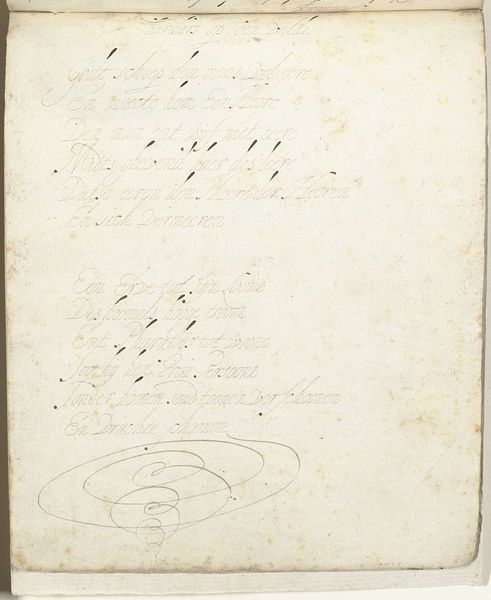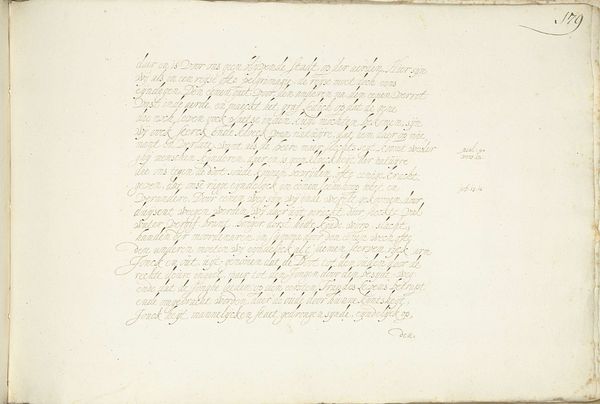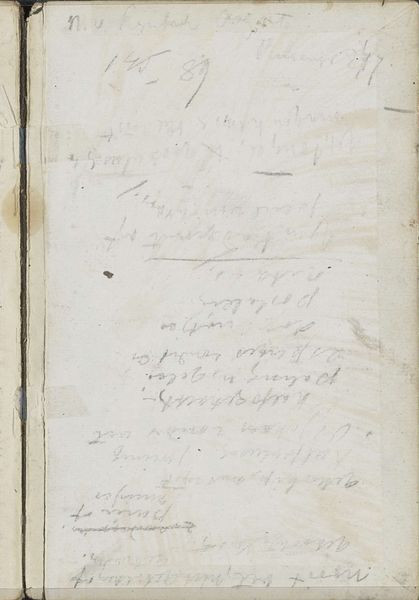
drawing, paper, watercolor
#
portrait
#
drawing
#
dutch-golden-age
#
figuration
#
paper
#
watercolor
#
group-portraits
#
genre-painting
#
watercolor
Dimensions: height 313 mm, width 204 mm
Copyright: Rijks Museum: Open Domain
Curator: This watercolor drawing on paper, dating back to 1658, is entitled "Vrolijk gezelschap in de buitenlucht," or "Merry Company Outdoors." It’s attributed to Gesina ter Borch, and it’s currently held in the Rijksmuseum collection. Editor: It’s an intriguing image. Immediately, the monochromatic treatment against the suggestion of outdoor foliage along the base gives it an ethereal, almost dreamlike quality. I'm also drawn to how sparsely she employed the medium; it really foregrounds the drawing itself. Curator: Ter Borch was known for her skill in depicting scenes of everyday life, these so-called "genre paintings". What's fascinating here is how she captures not just a gathering but the nuances of social interaction. These figures, arranged in a shallow space, seem to be deeply engaged with one another. Observe, also, how this image appears in an album page, juxtaposed to script above the depiction, giving the portrait an element of narration. Editor: It does speak volumes about labor and production, doesn't it? It appears to be created for an album, a space of intimate study and material collection. Also, the medium-- watercolor on paper, an accessible method with a rapid completion rate-- speaks to an understanding of craft embedded within Dutch society at the time. What was her position in relation to the means of production? Curator: As a woman artist in the Dutch Golden Age, her access to formal training would have been limited, likely confined to within her family sphere. Her skill, therefore, is all the more remarkable, and offers an implicit reflection on her environment. The delicate watercolor lends an intimate, almost diary-like quality to the scene, inviting viewers into a private moment of leisure. It asks us to reevaluate our biases about who produces and consumes artwork in the period. Editor: And the very composition points towards a reevaluation of how art is classified, doesn't it? That thin color wash troubles our reading of high and low culture, and invites us to rethink rigid artistic boundaries. Curator: Indeed, Gesina blurs such clear categorizations by combining both textual and visual modalities, enriching our appreciation for an era marked by significant advancements across scientific and cultural knowledge. Editor: Examining its material creation deepens the layers of social life that the artist explored so finely. Curator: Precisely. It brings us closer to understanding ter Borch’s cultural position through the art’s conceptual making.
Comments
No comments
Be the first to comment and join the conversation on the ultimate creative platform.
